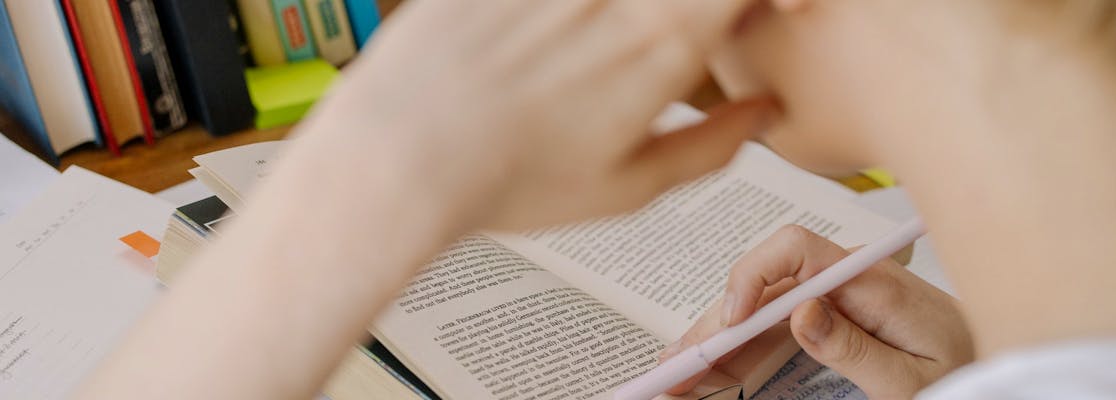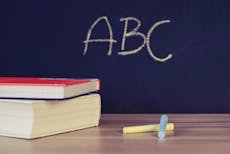NYC Gifted and Talented Test: A Guide with Practice Questions for 2025
All products and services featured are independently selected by WikiJob. When you register or purchase through links on this page, we may earn a commission.
- What Is the NYC Gifted and Talented Test?
- NYC G&T Gifted Programs
- Is the NYC G&T Test Right for My Child?
- What Is Tested On The NYC Gifted and Talented Test?
empty
empty
- Registering for the NYC Gifted and Talented Test
- How the NYC Gifted and Talented Test Is Scored
- How to Prepare for the NYC G&T Test in 2025
- Frequently Asked Questions
- Final Thoughts
What Is the NYC Gifted and Talented Test?
The NYC Gifted and Talented Test (G&T) is a New York City-based test designed to identify gifted children of Kindergarten to 3rd Grade ages.
Successful children will be eligible to apply for district G&T programs within NYC or citywide programs.
The benefit of having your child in a G&T program is that they will spend a large section of their education learning with other gifted children, using techniques and resources designed to enhance learning experiences.
NYC G&T Gifted Programs
G&T programs are not required to follow any standardized curriculum.
So long as they meet the Common Core Learning Standards in math, English and science, the schools are free to choose their own learning program.
As a result, some schools will focus on specific topics.
For example:
- The S.166 Richard Rodes School of Art and Technology emphasizes writing
- The Anderson School's focus is mathematics
- The 30th Avenue School in Queens is dedicated to engineering and technology
Taking tours around these schools and speaking to the teachers will help you decide if advance teaching methods are what your child needs.
Noticing if your child has a particular interest in an area should also influence your decision.
Is the NYC G&T Test Right for My Child?
The primary purpose of the nyc gifted and talented test is to assess if your child is eligible for a more advanced curriculum.
Usually, your child would be showing signs of being gifted, however, as the test is taken at kindergarten age, it is difficult to know for sure.
So long as your child is happy learning, there is nothing wrong with having them sit the gifted and talented nyc test. Knowing where they rank compared to their peers, and how developed they are, is always useful information.
If you are determined to have your child placed in a G&T program, you should apply in Kindergarten. There are so few seats available, and as your child gets older, there is less availability.
All seats generally fill up in Kindergarten and only become available later when a child drops out of a program.

What Is Tested On The NYC Gifted and Talented Test?
The NYC G&T test is a combination of the OLSAT verbal test and the NNAT non-verbal test. NYC gifted and talented practise tests will help with successfully passing the NYC G&T test.
There are 78 questions altogether – 30 verbal, 48 non-verbal – and there is no time limit for the nyc g&t test.
However, if the test administrator feels that your child is not making any effort to finish or take part, they will end it.
Verbal Questions
For the verbal section, your child will be asked to demonstrate the following:
1. Following Directions
Can your child match a verbal description given by the test administrator to the correct picture version?
Your child should be familiar with the concepts of 'above', 'between' and 'next to'.
1. Point to the picture that best matches this description:
There is a triangle inside of a square, and there is a circle next to it.
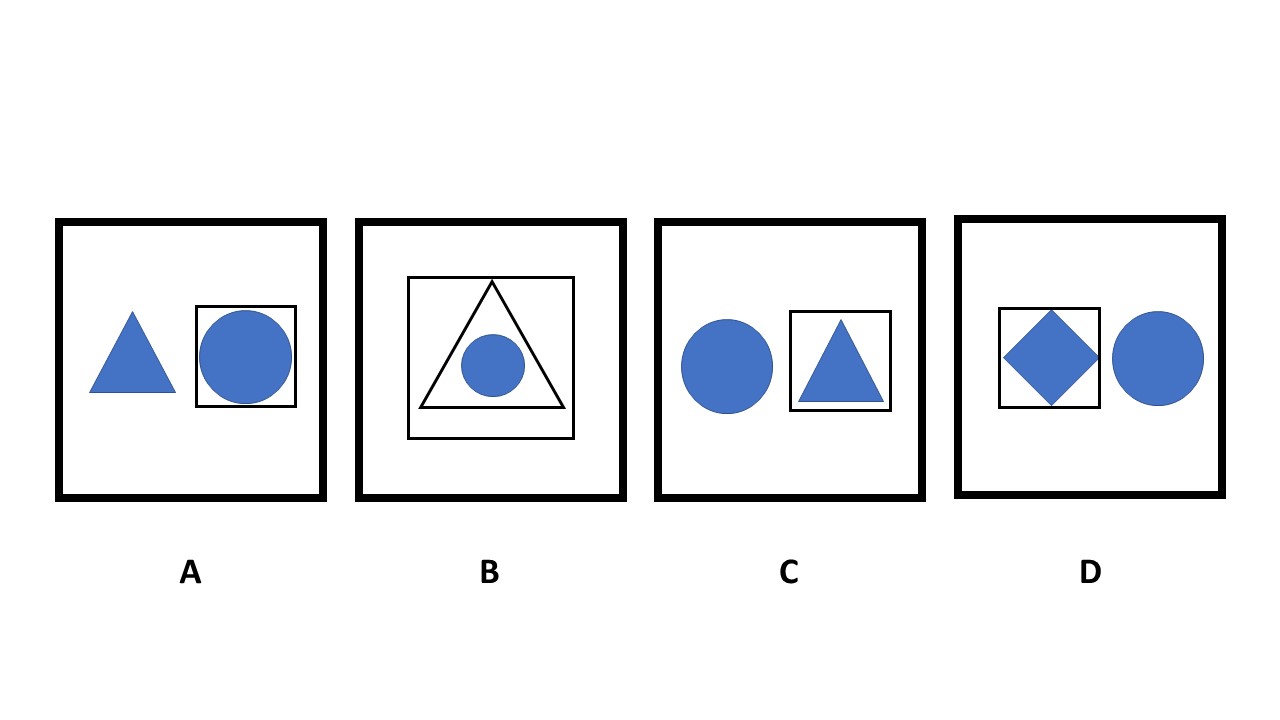
2. Aural Reasoning
This requires your child to visualize a situation and, using the information available, form a full picture in their mind that shows they have understood what they have been told.
2. Laila has to help her mom paint a wall. Point to the item Laila needs.
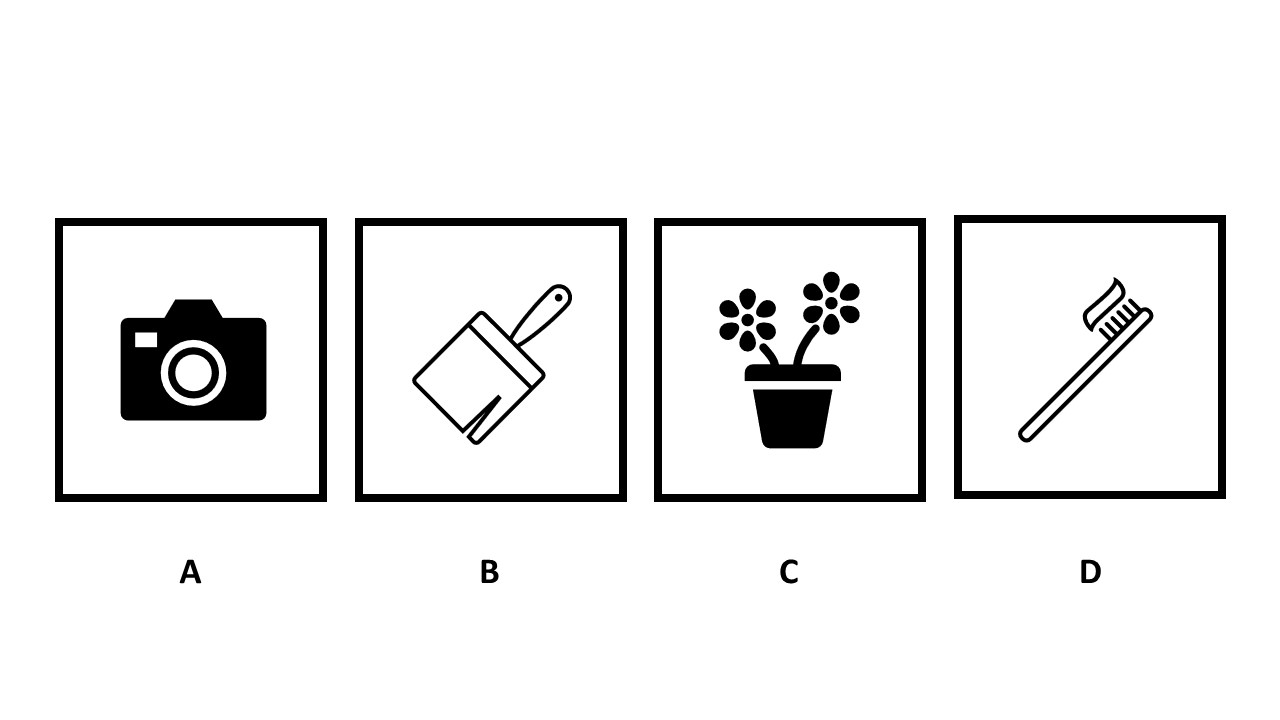
3. Arithmetic Reasoning
This section assesses the child’s ability to use the information given to find connections and calculate an outcome.
3. Luke bought 10 lollypops to share with his friends, you can see these in the first box. They ate half of the lollypops.
Point to the picture showing how many lollypops Luke has left.
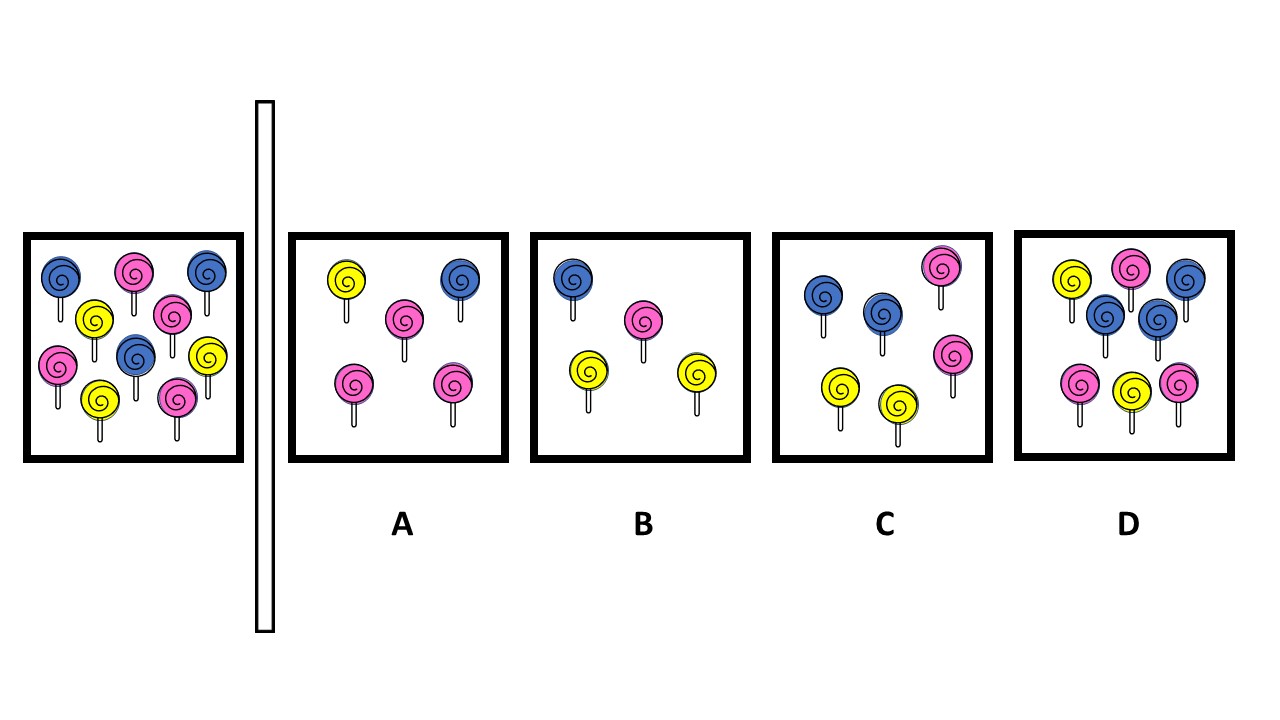
Non-Verbal Questions
This section assesses:
1. Pattern Completion
Can your child identify the missing piece of a design?
1. Look at the picture. Which one of these images completes the missing square?
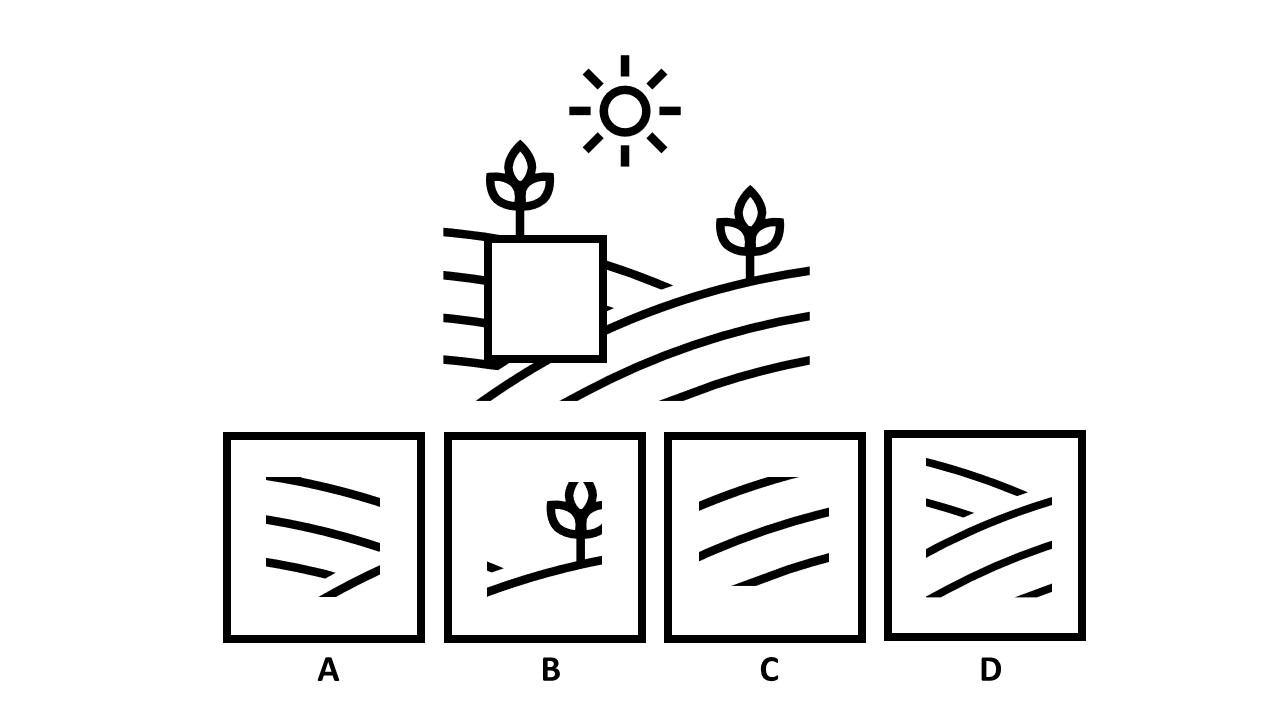
2. Look at all the pictures across and down. Which one is the next image?
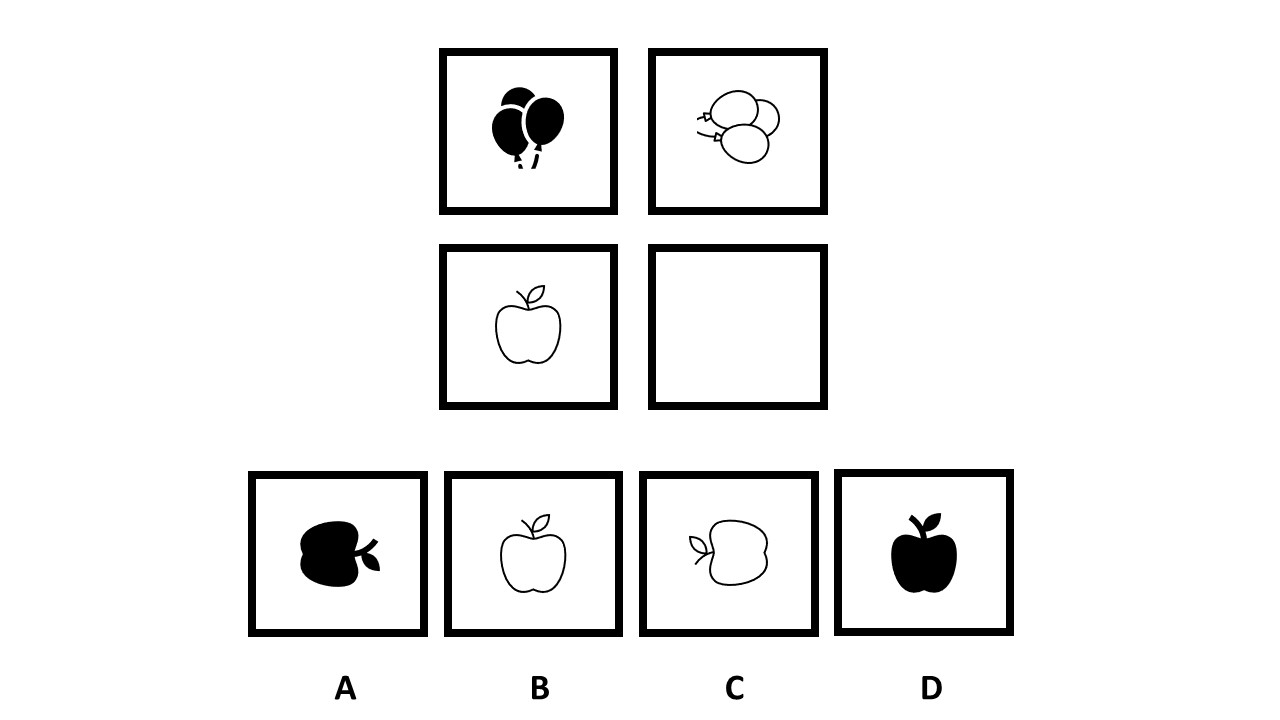
If you want 12-month access to all the practice resources for this test, our partner TestPrep-Online.com offers a Family Membership.
Family Membership gives you access to all the TestPrep-Online resources for the next 12 months. You will also get two separate accounts, which can be very helpful if you have two children preparing for their tests.
Get a Family Membership with 12-month access
3. Look at how the shapes and patterns change as you move along. Which of the images below completes this pattern?
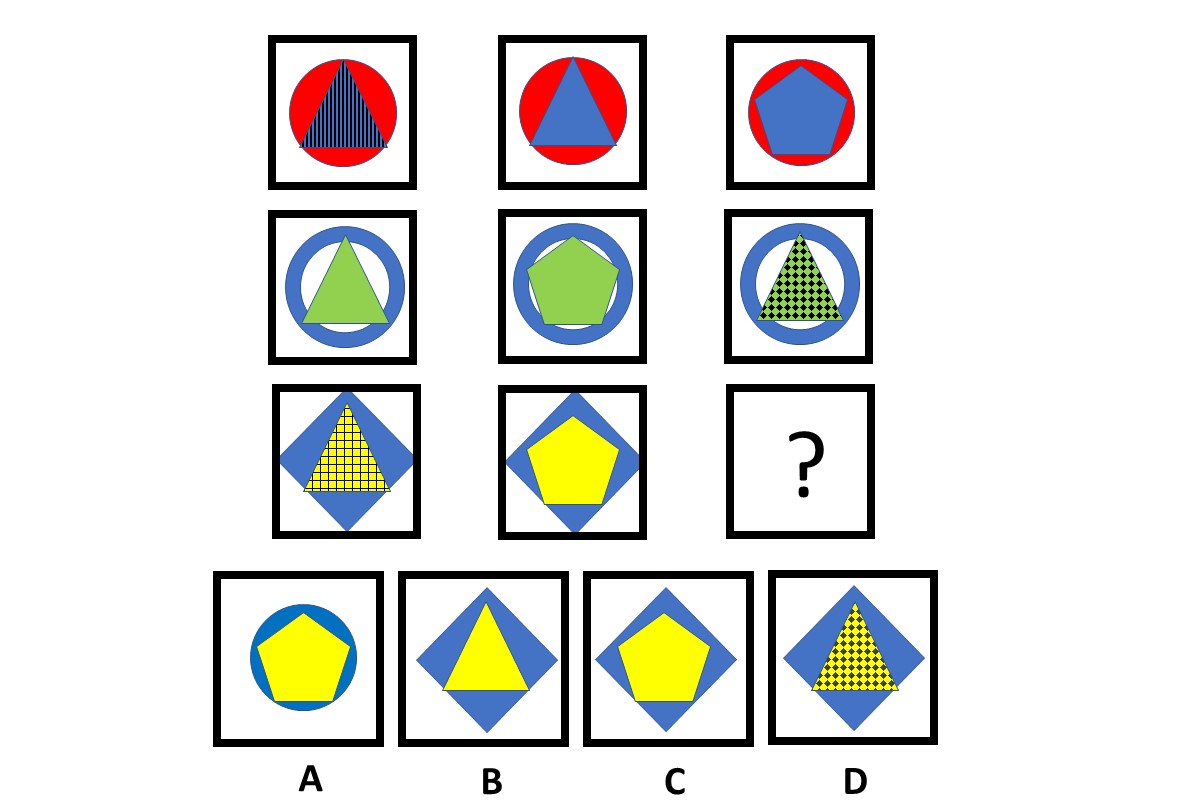
4. Spatial Visualization
Is your child confident enough with shapes to combine two or more different ones to make a final figure?
4. Look at these boxes. The last one is missing. Which one of these should go there?
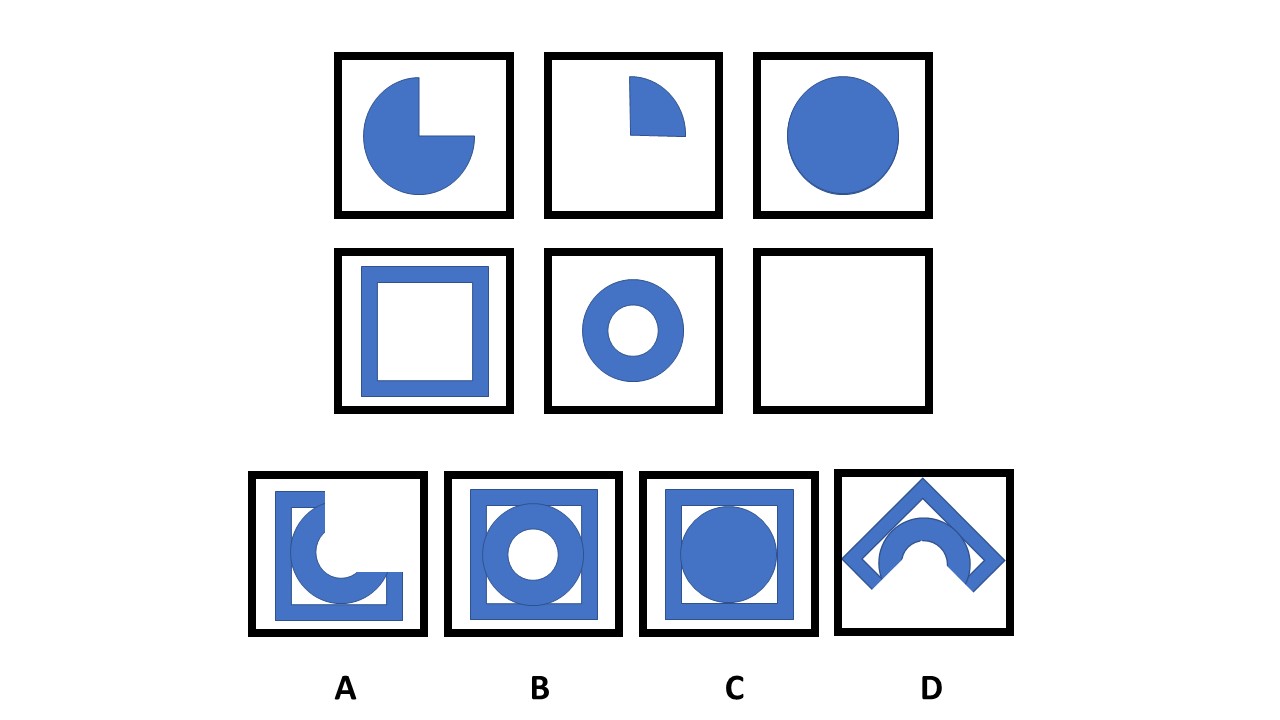
Test Details and Additional Accommodations
Depending on your child's age, gifted and talented tests nyc will be administered differently:
| Grade | Students Present | Test Type |
|---|---|---|
| Kindergarten | Individual test | Point to the pictures |
| 1st | Maximum 5 students | Mark a bubble sheet |
| 2nd | Maximum 10 students | Mark a bubble sheet |
| 3rd | Maximum 20 students | Mark a bubble sheet |
For the younger group, the questions will be read out following a script.
As the NYC G&T test is assessing your child's focus and problem-solving abilities, the question will not be repeated and other directions will not be allowed. The test administrator will stick to the test script.
The only exception is if there are any outside disturbances such as alarms and sirens, or someone entering the room.
Additional accommodations include large print papers, FM units, scribes and alternative languages.
If English is not your child's first language, it is recommended that you request a paper in a different language.
The options available are:
- Arabic
- Bengali
- Chinese Cantonese
- Chinese Mandarin
- French
- Haitian Creole
- Korean
- Russian
- Spanish
- Urdu
No matter what language your child sits their gifted and talented nyc practice test in, the results and admissions process will be the same as the English paper. Their English speaking skills are not being tested, nor are they a contributing factor.
NYC Gifted and Talented Practice Test
Registering for the NYC Gifted and Talented Test
Registration is straightforward and can be done on the NYC DOC website.
Registration opens in October. The documents needed for the process are:
- Proof of child's age
- Proof of address
- Report card, if applicable
- Your child's immunization records
How the NYC Gifted and Talented Test Is Scored
The verbal and non-verbal sections each carry 50% of the kindergarten gifted and talented test. You will receive the results of both sections as questions answered correctly; for example, verbal: 28, non-verbal: 40.
The NYC Department of Education (DOE) uses your child's age and the number of correct answers to create a scaled score for each section.
This scaled score is then converted into a percentile ranging from 1 to 99 using the mean score of all the children of the same age.
A result of 60% means that your child scored 60% better than the rest of their peer group.
Additionally, the two percentile scores are converted using the Normal Curve Equivalent (NCE).
The NCE looks at your child's overall success and improves their chance of qualifying for a program. If your child is in the 99th percentile for one test, but 58th for another, their overall result is 90, making them eligible for a district program.
The target percentile for a district program is 90, and for a citywide program, 97. However, as there is a lot of competition, you should aim for a 95 or a 99.
How to Prepare for the NYC G&T Test in 2025
Preparing for any g&t test for kindergarten can be stressful. Preparing a young child for one can be even harder.
Here are some step by step tips to help you get your child prepared:
Step 1. Be Supportive
Praise and reward your child after every practice and every correct answer.
The more uplifted and confident your child feels, the more successful they will be.
Step 2. Improve Focus
A significant element of this test is to assess your child's ability to focus.
As there is no time limit for the test, there is no real indication as to how long your child needs to remain focused.
Begin with 30-minute practice sessions and build-up to two hours if you can. Making practice sessions fun and rewarding will also help them to maintain focus.
Step 3. Boost Their Confidence Around Strangers
The test administrator will be someone your child has never met. If your child takes a long time to warm up to the administrator, they may decide to stop the exam due to a lack of participation.
If you know that your child is shy around strangers, make meeting new adults a regular occurrence.
It is recommended that you have other adults conduct the practice tests with your child.
Again, making it a fun game will help build that trust. To begin with, try with other parents or neighbors that you know very well.
Step 4. Make It Fun
Bright toys, building blocks and colorful crayons are perfect tools for practice tests. They indicate to your child that it is playtime, and they are items that they are familiar with.
Using test examples, recreate the questions as best you can with the toys and work to find the answer together.
As your child becomes more familiar and comfortable with the questions, let them discover the solutions by themselves.
After each question, ask your child why they chose that answer. They won't need to explain themselves in the real test, but asking them their thought process will make your child more self-aware.
Step 5. Take It Slow
Finally, do not stress your child.
If they don't develop key skills right away, that's ok. Just keep practicing with them.
Showing your anger or frustration will build resistance, and your child won't enjoy learning.
For some of the questions, the older students may have more details to remember. These questions are rare, but they do appear, so incorporate remembering lists as part of your practice too.
Prepare for NYC Gifted & Talented Practice Test
The best way to prepare for this examination is to sit with your child and review some practice questions.
Please do not force your kid to perform well; this will only discourage them from doing the examination. They should feel comfortable before the test.
The questions on the gifted and talented test are simple. At the kindergarten level, a child will be tested on their basic cognitive skills such as listening, reading and logical classification.
In addition, as your child ages, the questions on the gifted and talented test change. Your child will be tested on the skills they have learned in school.
The NYC gifted and talented test combines verbal and non-verbal questions.
In addition, there are a total of 78 questions, with 30 being verbal and 48 being non-verbal.
There is no set time for the test, but it usually takes pupils no longer than 2 hours to complete all the questions.
As a gifted and talented test is taken by children at a young age, there is no need to put a lot of pressure on them to revise.
This test examines a child’s natural, logical abilities and how quickly they can absorb information.
In this regard, keep any preparation fun and active. Avoid making your child sit for hours in front of a textbook.
The gifted and talented test duration in NYC can vary, but it typically takes about two hours.
However, it's advisable to check with the specific testing authority or the Department of Education for the most accurate and up-to-date information regarding the test duration.
Final Thoughts
There are approximately 2,500 places available for district programs, and 300 in citywide. About 35,000 students apply each year, making it highly competitive.
It is also important to remember that a number of those places are for topic-specific schools such as math or engineering.
If you are planning to have your child attend a comprehensive curriculum school, then the number of seats is even smaller.
District programs prioritize those living in the boroughs. Even if your child scores in the top 99th percentile, their seat may go to a child with a lesser score, but that lives closer.
One final recommendation is to take the gifted and talented nyc test as late as possible, so you have adequate practice time. Late January or February is ideal. The results are mailed in April. Program applications begin in May, and final placements are issued by June.
Deciding the best route for your child is not always easy. Speak to other parents, teachers and DOE advisors to gather as much information as possible.
